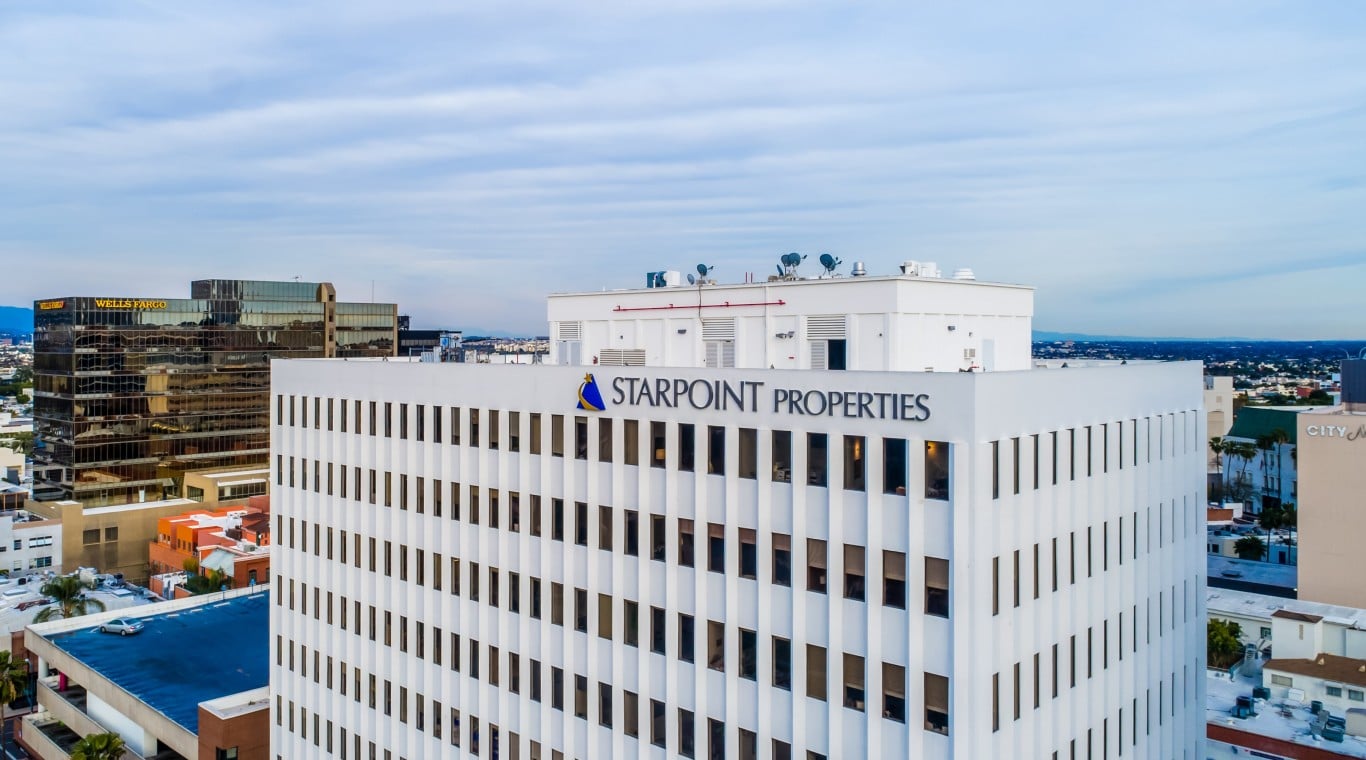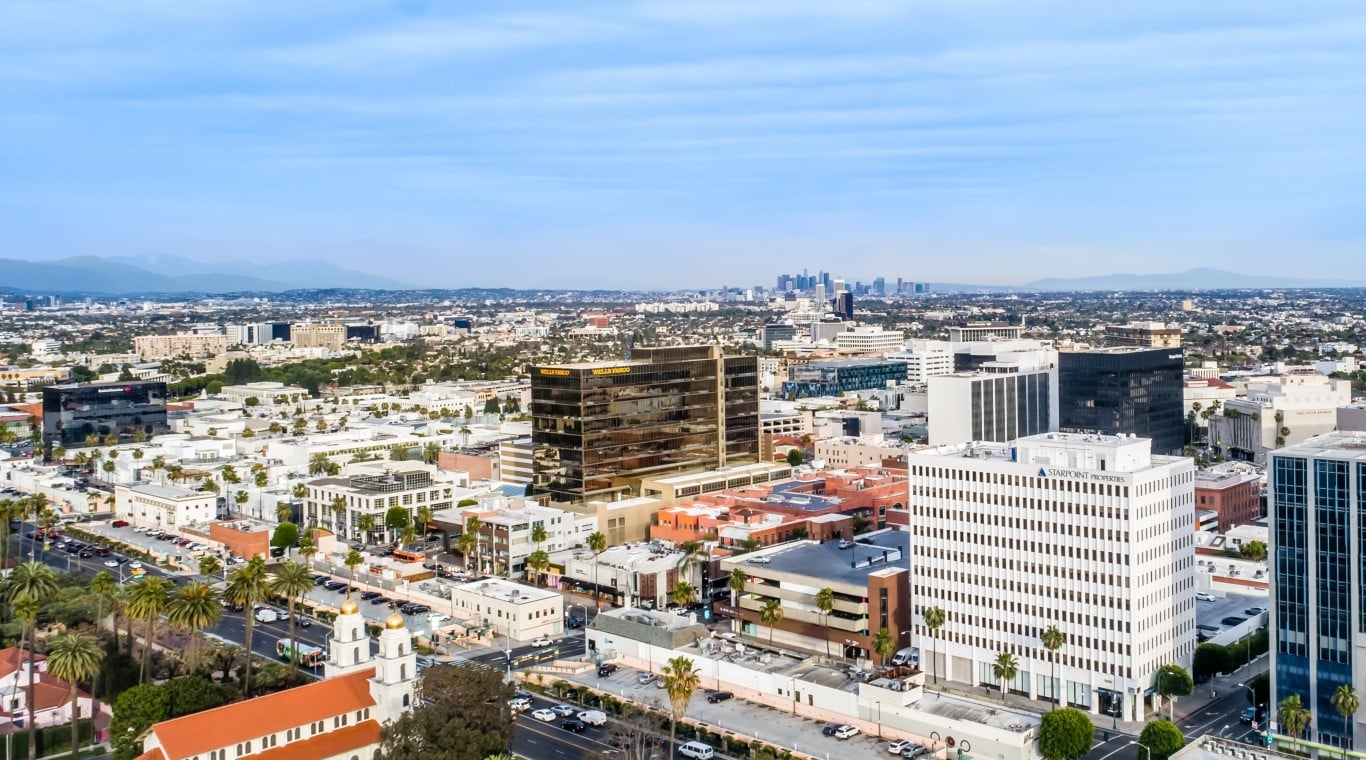The Main Factor
While innumerable variables factor into the value and prospects for any particular land parcel or development project, when choosing a metropolitan region in which to invest one lone variable trumps all: Population growth, recent and future.
A city with a growing population will almost invariably generate rising income and values for property owners, as increasing numbers of buyers and renters vie for space. City cores will become denser and more expensive, more retail space and warehouses will be in demand, and prime residential neighborhoods will evolve.
The expanding regional tax base becomes a virtuous cycle, as city governments are able to meet civic needs not by raising taxes but by the lighter levies on the widening number of taxable endeavors.
Few need to be reminded of the untoward results found in cities that have endured declining populations in recent decades, primarily in the Rust Belt. While after careful selection some shrewd investors have profitably purchased and sold real estate in every city US city in past years, in general a rising urban tide of population lifts all property boats, and vice-versa.
That said, certain growing metropolitan regions and property sectors offer even better odds than others.
The following six major cities—Phoenix, Salt Lake City, Denver, Austin, Dallas and Sacramento—currently offer the best mix of population growth with other civic advantages to help real estate investors reap rewards.
1. Phoenix
It is continuing population growth that puts the Phoenix Metro Area at the top of any list for investors seeking income and capital gains in real estate.
| Year | Pop. | % Increase | US Average |
|---|---|---|---|
| 1960 | 558,000 | ||
| 1970 | 874,000 | 56.6% | 10.5% |
| 1980 | 1,422,000 | 62.7% | 9.5% |
| 1990 | 2,025,000 | 42.4% | 9.8% |
| 2000 | 2,923,000 | 44.3% | 11.7% |
| 2010 | 3,649,000 | 34.8% | 9.7% |
| 2020 | 4,511,000 | 23.6% | 7.1% |
| 2025 | 5,081,000 (est.) | 12.6% | 2.8% |
For decades Phoenix has grown as a lower-cost alternative to the West Coast, and still enjoys that advantage. But with the accumulation of population and urban amenities, Phoenix has risen as a worthy city in its own right, with all the features of a major metropolis to attract residents, such as major-league sports teams, museums, and a regional dining scene.
The critical mass of people, livability, and jobs has become a self-feeding cycle in Phoenix, prompting major and innovative employers such as Taiwan Semiconductor, Lucid Motors, ElectraMeccanica and others to move into the region, in search of reasonable business regulations, taxes, strong infrastructure, and the right labor pool.
Taiwan Semiconductor is planning a $12.5-billion chipmaking plant in the Phoenix area, while EV-maker Lucid Motors has completed a factory to build up to 300,000 vehicles annually. KORE Power has announced its plans for a 1-million-square-foot lithium-ion battery manufacturing plant to be built in Buckeye, just west of Phoenix. It’s the first “Li-ion” plant in the US. Other 21st century manufacturing companies too numerous to mention are also gravitating towards Phoenix, exemplified by tech outfits such as ElectraMeccanica, a maker of electric vehicles.
Phoenix is also the state capital of Arizona, which naturally drives government and government contractor jobs.
Propelled by population growth and higher-wage industries, Phoenix property values have been escalating in recent years. In the five years through 2021, the average house price in Phoenix all but doubled to $383,924, according to real estate information service Zillow. Other sectors performed similarly.
Given population trends and the location of expanding tech industries, the Phoenix property story promises to have many more positive chapters.
2. Salt Lake City
Salt Lake City is yet another Western US success story offering an educated workforce, low taxes, quality of life and natural geographic barriers to supply. Its population is growing and luring new residents to its good climate and recreational opportunities while achieving enough critical mass that it can go toe-to-toe with most major cities in terms of cultural amenities such as museums and restaurants. The tech industries have discovered this relatively lower cost option to the West Coast.
| Year | Pop. | % Increase | US Average |
|---|---|---|---|
| 1960 | 351,000 | ||
| 1970 | 483,000 | 37.6% | 10.5% |
| 1980 | 677,000 | 40.2% | 9.5% |
| 1990 | 792,000 | 17.0% | 9.8% |
| 2000 | 891,000 | 12.5% | 11.7% |
| 2010 | 1,025,000 | 15.0% | 9.7% |
| 2020 | 1,169,000 | 14.0% | 7.1% |
| 2025 | 1,226,000 (est). | 4.9% | 2.8% |
The proximity of the Wasatch mountain range to Salt Lake City offers an abundance of hiking, rafting, fishing and skiing opportunities come with a catch: The hills and protected areas act as barriers against the horizontal expansion of Salt Lake City, and that factor, among others, is pushing property values rapidly higher.
Rising demand has pushed the average house price in Salt Lake City from $301,000 in 2016 to $569,923 in 2021.
Office lease rates in Salt Lake City are rising too, and are not much different from downtown Los Angeles, though still far less than Silicon Valley or Boston.
Among other attractions, Salt Lake City is the state capital and home to the flagship University of Utah, while Brigham Young University is an hour’s drive away in Provo. This agglomeration of government, culture and academics results in employable graduates, especially for tech industries.
Not surprisingly, Forbes magazine recently ranked Salt Lake City in the top 10 metro areas in the nation in terms of tech leases being signed.
In addition, Salt Lake City’s historic nickname is apt: the “Crossroads of the West.” In modern times this advantage translates the city into a useful logistics-warehousing hub for Far West states.
Like other Southwest city growth and success stories, Salt Lake City has gained the critical mass and the attendant culture and recreational opportunities necessary to attract new residents and companies to the emerging scene. The constrained geography of the city, population growth and consequent tighter property markets make Salt Lake City a promising home for property investors.
3. Denver
The Rocky Mountains have splendor in excess, and Denver is but a short drive from gorgeous viewpoints and endless mountaineering pursuits. Like the other cities on this list, the Mile High City has matured in recent decades, thus gaining enough population to retain the requisite nightlife, dining, cultural amenities and four major-league sport teams—all the diversions, in short, that modern urbanites demand. The city also boasts a thriving craft-beer industry.
| Year | Pop. | % Increase | US Average |
|---|---|---|---|
| 1960 | 809,000 | ||
| 1970 | 1,054,000 | 30.3% | 10.5% |
| 1980 | 1,356,000 | 28.7% | 9.5% |
| 1990 | 1,528,000 | 12.7% | 9.8% |
| 2000 | 1,994,000 | 30.5% | 11.7% |
| 2010 | 2,385,000 | 19.6% | 9.7% |
| 2020 | 2,837,000 | 19.0% | 7.1% |
| 2025 | 2,995,000 | 5.6% | 2.8% |
Denver is the state capital, and regional headquarters for many federal agencies, and home to the University of Colorado campuses in Denver and nearby Boulder.
Because Denver is the largest city within a 500-mile radius, it is a key warehousing-distribution center for Mountain and Southwest states, and also serves longer-hauls as it is equidistant between Chicago and major West Coast ports.
The long-running oil-shale boom has also enriched Denver coffers.
As with many other Western cities, Denver is geographically constrained by mountains that cramp property supply, especially as the population tallies higher. Denver has been a solid-enough prospect for long enough that large institutional investors are keen to own core real estate within it, facilitating an exit strategy for those willing to do the prep work.
The outlook for Denver property is positive, with the risk-reward ratio heavily weighted towards the upside.
4. Austin
The Austin story tells itself in recurring headlines, such as CEO Elon Musk moving his Tesla headquarters to the city from California, to be near the $1.1 billion, 8.0 million-square-foot Texas factory that will build batteries and EVs. The Tesla migration followed on the heels of Oracle, the world’s largest database company, also moving from Silicon Valley. Texas is famous for its pro-growth policies and lack of an income tax. Austin has been on a growth tear for a generation, and nothing seems likely to halt the trend.
| Year | Pop. | % Increase | US Average |
|---|---|---|---|
| 1960 | 189,000 | ||
| 1970 | 267,000 | 41.3% | 10.5% |
| 1980 | 383,000 | 43.3% | 9.5% |
| 1990 | 569,000 | 48.6% | 9.8% |
| 2000 | 911,000 | 60.1% | 11.7% |
| 2010 | 1,317,000 | 44.6% | 9.7% |
| 2020 | 2,053,000 | 55.9% | 7.1% |
| 2025 | 2,313,000 | 12.7% | 2.8% |
Like other cities on the list, Austin is both a state capital and host to a major institution of higher learning, the University of Texas at Austin, the combination that creates the talent pools wanted by tech-centric employers.
Austin is also known for its music scene, beer halls, abundant dining options and nearby lakes.
Austin’s popularity is seen in house prices, which averaged $606,319 in 2021, up from the $323,000 tallied five years earlier.
Celebrities have been moving into the city, such as talk-show host Joe Rogan, who left Los Angeles.
Austin has made its national mark as a tech-capital option to Silicon Valley or Boston, and one with lower taxes and pro-business government. That reputation will assure stronger property values for years into the future.
5. Dallas-Ft. Worth
Another entry from the low-tax, low-regulation state of Texas, the Dallas-Ft. Worth metro area has grown into a city of national stature, with more than 6.4 million residents and targeting a population of 7.0 million before 2030.
| Year | Pop. | % Increase | US Average |
|---|---|---|---|
| 1960 | 1,447,000 | ||
| 1970 | 2,025,000 | 39.9% | 10.5% |
| 1980 | 2,468,000 | 21.9% | 9.5% |
| 1990 | 3,219,000 | 30.4% | 9.8% |
| 2000 | 4,168,000 | 29.5% | 11.7% |
| 2010 | 5,149,000 | 23.5% | 9.7% |
| 2020 | 6,301,000 | 22.4% | 7.1% |
| 2025 | 6,732,000 | 6.8% | 2.8% |
For corporations and executives facing hefty state income taxes in California and New York, Dallas is a worthy option, and where business moves, so do support staffs.
Seen as a farm-and-oil town a couple generations ago, Dallas-Ft Worth has attracted defense, financial services, information technology, telecommunications, and especially transportation companies in recent decades—although the oil shale boom has not hurt.
Four major interstate highways converge on Dallas-Ft. Worth, as well as major railroad lines, making the city a natural logistics hub, in addition to its central location for the entire U.S., and relative proximity to the Gulf Coast and ports.
While not a state capital—Austin has that crown—Dallas-Ft Worth is home to a constellation of universities, including Southern Methodist University, University of Texas at Arlington and the University of North Texas, providing industries with the necessary talent pool.
Dallas-Ft. Worth has the usual urban amenities of major league sports teams, museums and cuisine, but is happily lacking in one usual big-city feature: High housing costs. The average house price in Dallas was $287,282 in 2021, and $276,047 in Ft. Worth, mere fractions of the equivalent in many coastal regions.
Dallas-Ft. Worth office rents are reasonable, and warehouses are being sold as fast as they can be built.
Dallas-Ft. Worth is already a large metropolis, but all is set for the kind of population growth and higher property values that will make one of the nation’s leading cities.
6. Sacramento
The lone California entry on the list of best cities to buy real estate, Sacramento has been growing for decades as the capital of the nation’s most populous state. The climate is picture-perfect in this metro which has has enjoyed a turbo-boost in growth in recent years as the low-cost alternative to the unaffordable living and business costs of the nearby Silicon Valley-San Francisco Bay Area. This is a city with Phoenix-like rent growth and a California address.
| Year | Pop. | % Increase | US Average |
|---|---|---|---|
| 1960 | 456,000 | ||
| 1970 | 637,000 | 39.7% | 10.5% |
| 1980 | 803,000 | 26.1% | 9.5% |
| 1990 | 1,104,000 | 37.5% | 9.8% |
| 2000 | 1,401,000 | 26.9% | 11.7% |
| 2010 | 1,733,000 | 23.7% | 9.7% |
| 2020 | 2,123,000 | 22.5% | 7.1% |
| 2025 | 2,269,000 | 6.9% | 2.8% |
The average house in 2021 in Sacramento is $468,661, a bit hefty and rising rapidly, but still less than a third the typical house price in San Francisco.
Office rents in Sacramento are also a fraction of Bay Area leases.
Yet Sacramento is a couple of hours by car closer to the pristine beauty of Lake Tahoe and its skiing, hiking and mountaineering opportunities, and the state capital weather is California-style.
Two rivers run through town, offering kayaking and other recreational opportunities, as well as a deep water port connected to the San Francisco Bay.
Sacramento has Cal State Sacramento and the University of California at Davis and other schools within its environs, producing graduates to both progressive industries, such as Tech, and traditional sectors, such as agriculture.
In addition, Sacramento is 90 minutes by car to San Francisco, which translates into reasonable access to all the diversions of the Bay Area.
Sacramento property for the foreseeable future will continue to catch businesses and residents who depart the high costs of the Bay Area but wish to stay within Northern California and enjoy the region’s incredible physical beauty, good weather and cultural amenities.
Conclusion
The six cities listed above offer the best real estate opportunities in the nation to limit risk and maximize rewards, and yet all six cities look to have many new chapters to write, well-situated as they are to continue to attract new residents.
In recent generations, America’s property boom times were along the coast. Judging from population flows, the heartland’s time has come.
https://www.macrotrends.net/cities/23099/phoenix/population
https://www.zillow.com/phoenix-az/home-values/
https://www.macrotrends.net/cities/23126/salt-lake-city/population
https://www.zillow.com/salt-lake-city-ut/home-values/
https://www.macrotrends.net/cities/22972/denver/population
https://www.macrotrends.net/cities/22926/austin/population
https://www.macrotrends.net/cities/23121/sacramento/population


